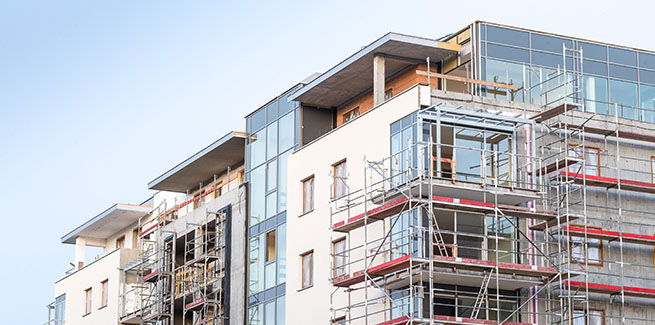A report from the Property Council of Australia, laying out research conducted with 21 developers, has estimated around 10,000 apartments have been delayed in the Western Australian capital city.
Around 35 per cent of apartments approved for development and a further $2.2 billion worth of projects in the pre-development approval stage were estimated to be on hold currently, due to escalating construction costs that eliminated profit margins and made projects unfeasible.
On average, developers had experienced a 20 per cent rise in construction costs.
As a result, projects are being delayed by seven to 12 months, the majority of surveyed developers reported.
The survey also revealed the primary reason for project delays was labour shortages.
According to the white paper, “severe worker shortages” in Western Australia, partly due to a pause on migration through the pandemic, alongside the growth of the state’s economy, have contributed to rapidly rising construction costs.
The limitations on labour have forced businesses to scale back trading hours and outputs, and tightened wage pressures, while product shortages and constraints on supply chains have also fed into rising costs.
“Product availability and price escalation have created serious concerns for the development industry. Adjusting to the rising costs of workers and materials is easier said than done, as most builders lock in work, under fixed-price contracts, many months before they break ground,” the report said.
“In the past 12 months, two mid-tier builders have gone into administration and one has exited the WA market. Apartment developers rely on the mid-tier builder market to deliver projects.”
But the pressures have added to already existing issues around housing supply and affordability, the report noted.
“Despite positive policy announcements during the pandemic leading to more housing supply, such as the WA Building Bonus and stamp duty rebates for apartments sold off the plan, years of undersupply, underinvestment and a moderately growing population has resulted in rising property prices,” the report stated.
The Property Council has raised the alarm around potential impacts for housing affordability in Perth, with the report noting supply constraints and market buoyancy have already resulted in the median house price within 10 kilometres of the CBD lift to more than $1 million.
Over the past year, the median house price in Perth has increased by $40,000, while stamp duty has climbed by almost $2,000.
The average Perth family is now required to save for an extra two years to cover house prices over the last year, the paper stated, based on a savings rate of 20 per cent of total income.
Around 39 per cent of the surveyed developers stated a further 6 to 10 per cent increase to the end-buyer price for apartments in the works would be needed, in order for projects to “stack up”. Around three in 10 developers (28 per cent) said it would require a price rise greater than 10 per cent, while another 28 per cent said it would need more than a 20 per cent surge.
But as house prices have risen, the Perth investor market has stayed “flaccid”, the report said, with 20.2 per cent of investors selling in Perth, compared to 5.5 per cent buying.
Property Council Western Australian executive director Sandra Brewer has urged for swift action “to avert a future housing and affordability crisis”.
“Despite positive policy announcements during the pandemic, like the WA Building Bonus and stamp duty rebates for apartments sold off-the-plan, years of undersupply and underinvestment have put more pressure on house prices,” Ms Brewer said.
“As housing becomes more expensive, people move down the property ladder, escalating demand for social housing and [it] puts more people at risk of homelessness.”
The Property Council has noted more workers will be needed before more supply can come to market.
“Property markets can provide for workers even in highly constrained conditions,” the report said.
“However, elevated delivery of property CANNOT occur with the additional workforce.”
Ms Brewer added: “Periods of rapid economic growth have shown us that fixing housing affordability requires policy focused on workers first – because, without workers, property markets cannot deliver the homes people need.”
The report has suggested policy responses that address worker shortages, prioritise population growth, remove barriers to investment and develop alternative housing models.
Among them are calls to remove property purchase barriers for skilled migrants, to make the stamp duty rebate on apartments permanent, to implement a grant to stimulate downsizing and to stimulate build to rent.
“We know housing affordability is influenced by many interrelated factors that cannot be addressed in isolation,” Ms Brewer said.

